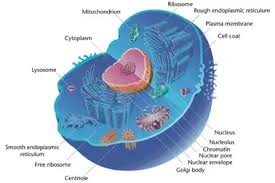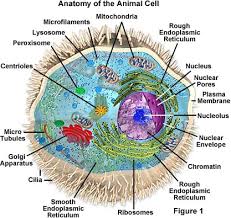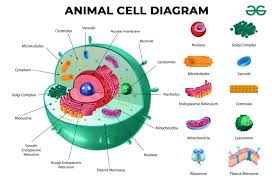In this article, the basic unit of life, the cell, will be explored. A typical animal cell will be drawn and its major components will be clearly labeled. The functions of these major components of the animal cell will also be explained.
Read Also: Cultivation Methods For Different Fruit Trees And Bushes
Structure of an Animal Cell in Agriculture

All cells share certain features that enable them to perform the basic life functions of reproduction, growth, response to stimuli, and energy use. Body cells also have specialized features. For example, the more than 260 specialized or differentiated cell types in the human body arise because cells express different genes.
The body cells of humans and other animals (such as sheep, goats, cattle, rabbits, chickens, etc.) fall into four broad categories: epithelium (lining cells), muscle, nerve, and connective tissues (blood, bone, cartilage, adipose, and others).
Biologists recognize three broad types of cells that define three major ‘domains’ of life: the Archaea, the Bacteria, and the Eukarya. A domain is a classification that is broader than the familiar kingdom.
The Archaea and Bacteria were previously classified together as prokaryotes because they both lack a nucleus. They are now recognized as separate domains and are both single-celled.
However, they differ in many of their genetic molecules and in the types of molecules in their membranes. The third domain of life, Eukarya or eukaryotes, includes single-celled organisms that have nuclei, as well as all multicellular organisms.
Read Also: Various Types Of Fruits And Their Nutritional Value
Major Components of the Animal Cell and Their Functions

For a typical animal cell to carry out the activities of life, structures called organelles divide and share the labor. They keep related biochemicals and structures close enough to interact efficiently, retaining and using genetic instructions.
1. Nucleus and Its Role in the Animal Cell
The most prominent organelle is the nucleus, which is enclosed in a layer called the nuclear envelope. Within the nucleus, an area that appears darkened under a microscope, called the nucleolus, is the site of ribosome production.
The nucleus is filled with DNA (deoxyribonucleic acid) and RNA (ribonucleic acid). The remainder of the cell, excluding the nucleus, organelles, and cell membrane, is called the cytoplasm.
2. Golgi Apparatus and Its Function in the Animal Cell
The Golgi apparatus is a stack of flat, membrane-enclosed sacs where sugars are synthesized and linked to form starches, or attach to proteins to form glycoproteins, or to lipids to form glycolipids.
3. Lysosomes and Peroxisomes in Animal Cells
Lysosomes and peroxisomes are membrane-bounded sacs that contain enzymes responsible for dismantling or digesting captured bacterial remnants, worn-out organelles, and other debris. A lysosome loaded with such ‘garbage’ moves toward the cell membrane, fuses with it, and dumps its contents outside the cell.
4. Mitochondria and Their Energy Role in Animal Cells
The organelles called mitochondria provide energy by breaking down the products of digestion. They are of particular interest to geneticists because, like the nucleus, they contain DNA, though in small amounts.
It is hoped that this article has helped clarify how to draw and label the structure of a typical animal cell. The functions of these major components should now be clearly understood, as these components and their functions are vital to the integrity of the cell and play a crucial role in cell division.
Do you have any questions, suggestions, or contributions? If so, please feel free to use the comment box below to share your thoughts. We also encourage you to kindly share this information with others who might benefit from it. Since we can’t reach everyone at once, we truly appreciate your help in spreading the word. Thank you so much for your support and for sharing!

